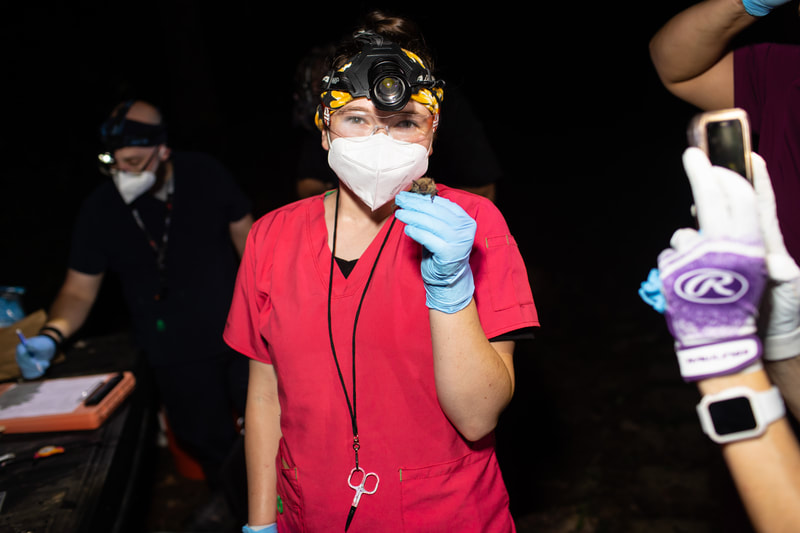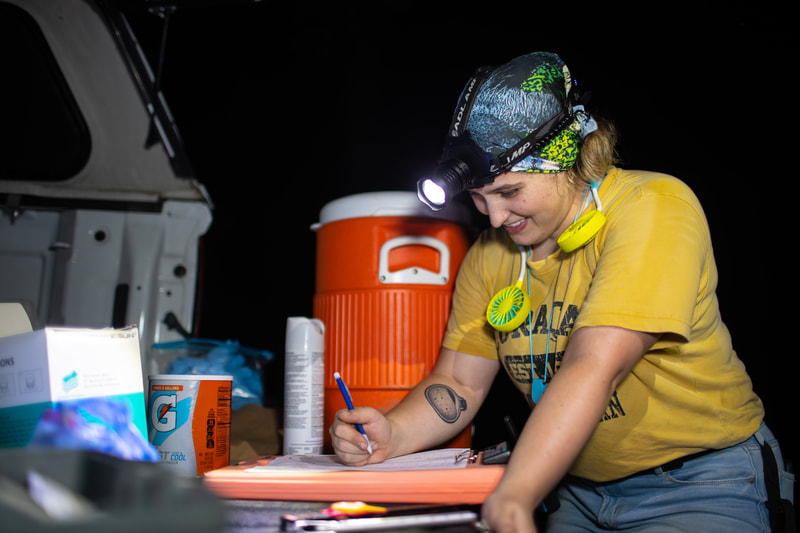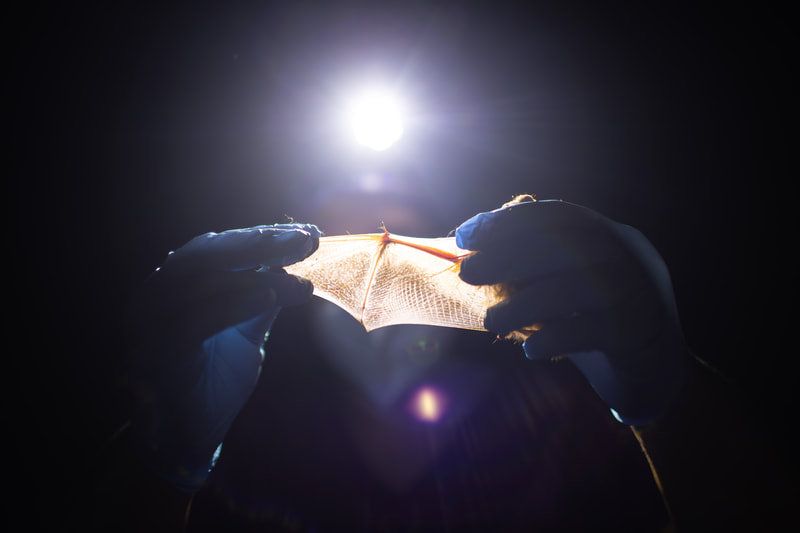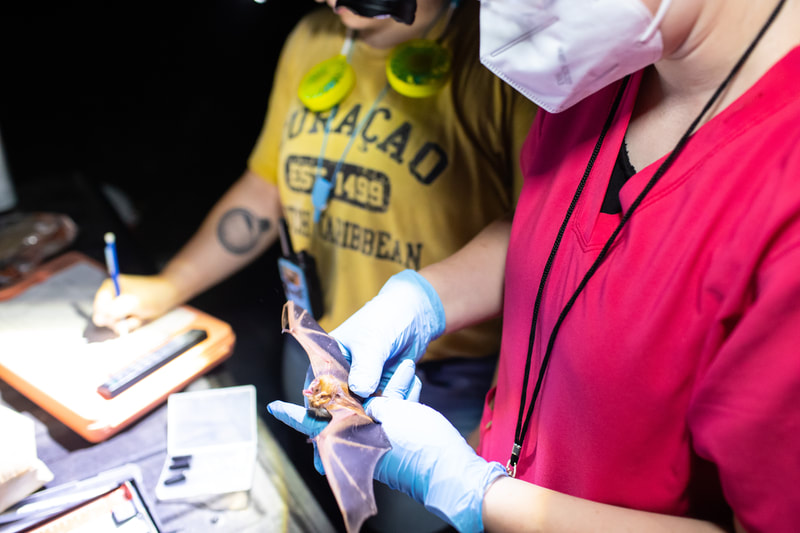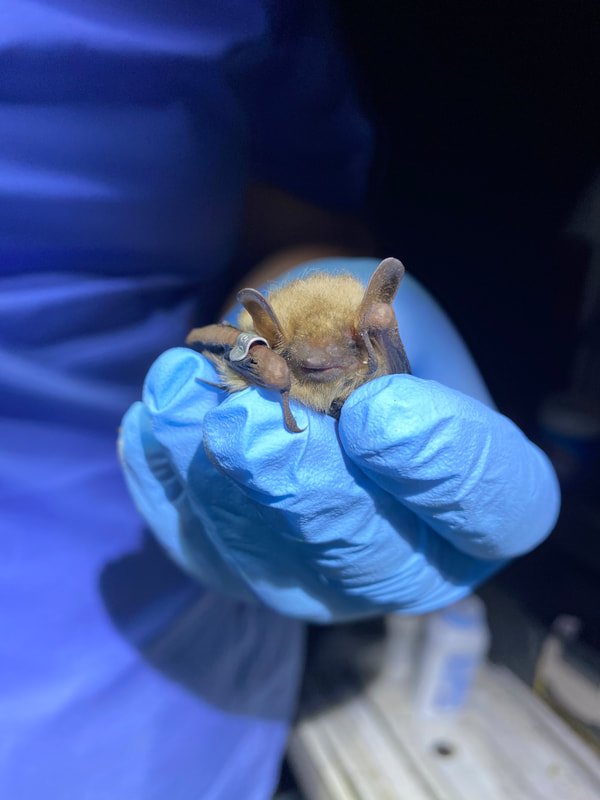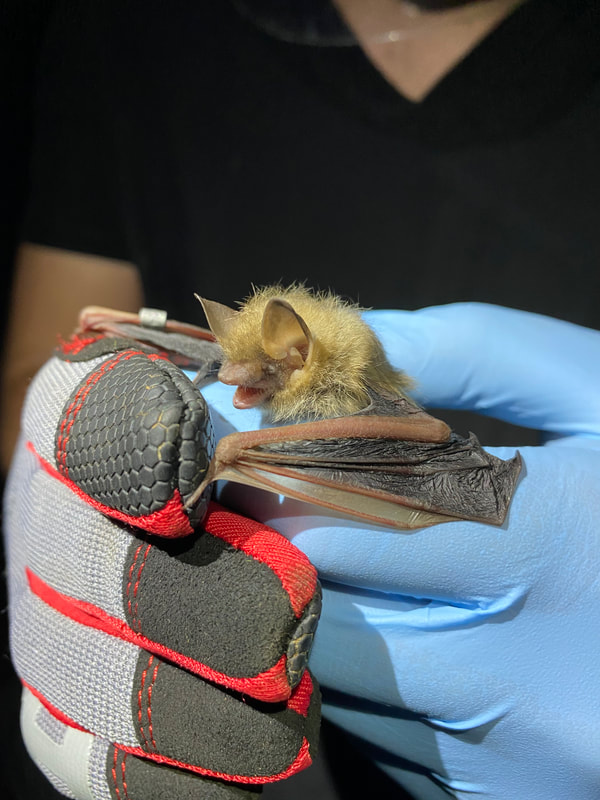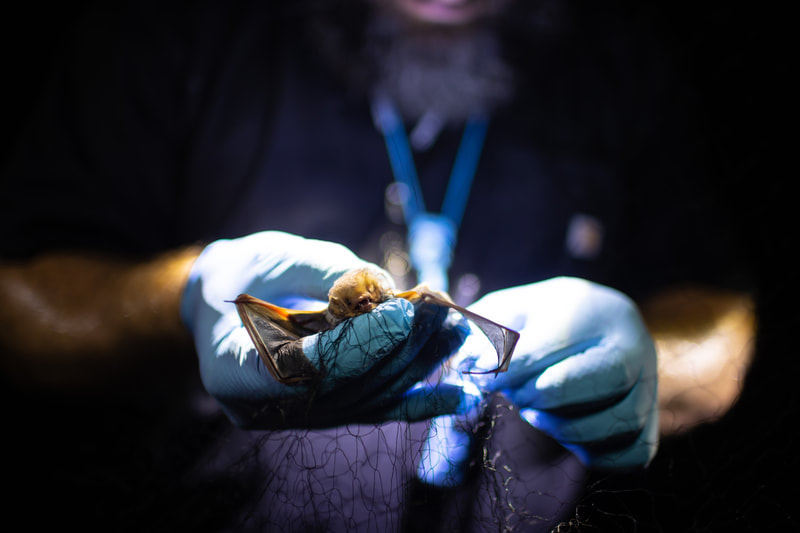The lab is tackling many projects associated with mammal conservation, many focusing on bats and rodents in the southeastern US. These projects include:
Impacts of humidity and hibernaculum substrate on growth of the causal fungus of white-nose syndromeThis research aims to study the growth behavior of the fungus responsible for white-nose syndrome (WNS) (Pseudogymnoascus destructans) under controlled laboratory conditions. The experiments focus on understanding how this pathogen thrives under varying relative humidities and on different substrates, particularly those mimicking natural and non-natural cave environments (gypsum, sandstone, graphite) and bat wings. This work is critical to better understand how the continue spread of the pathogen will impact bat populations in less humid and mad-made environments. This work is lead by graduate student Leah Crowley and undergraduate students Logan Young and Faith Sewell.
|
|
Testing the thermal suitability of bat boxes and use in response to temperatureRecent research suggests that bat houses often over-heat during the summer due to size, placement, and over-crowding, ultimately leading to mortality in vulnerable bat species. The objective of this work is to determine fine-scale use of bat boxes in response to temperature per species. We also aim to include a community outreach component to this project, where we will work with public and private landowners to assess thermal suitability and bat use of their personal bat boxes. The results from this study will help mitigate human-bat conflicts with the understanding of how artificial roosts may not be as suitable as once thought and assessing how bats respond to these stresses. This work is currently led by lab technician Erik Anderson.
|
|
Monitoring impacts of southeastern grassland restoration on small mammal communitiesExtensive habitat loss and degradation have altered native grasslands in the southeastern United States. Restoration efforts, such as those in grasslands managed by the Southeastern Grasslands Initiative, may provide the necessary resources for historical wildlife communities. We are assessing restoration efforts by estimating the small mammal community composition between a restored grassland, an unrestored grassland, and a remnant grassland in Tennessee. We are using a combination of small mammal live-trapping, camera trapping, and acoustic monitoring to assess small mammal species diversity among the treatments. This project is lead by graduate students Ryan Stuart and Dakota Van Parys and has lots of help from undergraduate volunteers, including Casey Kleinhans, Gabrielle Tomboc, Jaron Sedlock, Kaia Raines-Ownby, Macee Roberts, and Kamaya Holloway.
|
The impacts of intraguild competition and predator-prey relationships on mammal occupancy in a restored grasslandWe aim to understand the effects of surrounding habitat composition, intraguild interactions, and predator-prey relationships on the presence of meso-carnivores, within multiple prairie restoration sites of the Tennessee Cumberland Plateau. Using multi-species occupancy, we aim to evaluate; 1) the effects of landscape variables on the spatial occupancy of meso-mammal species (), 2) to study the intraguild relationships on spatial occupancy of coyote (Canis latrans), bobcat (Lynx rufus), and the raccoon (Procyon lotor), and 3) the effects of predator-prey interactions on spatial occupancy of these species. This research is led by graduate student Ryan Stuart.
|
Gut passage time in southeastern bats and impacts of environmental temperatureOur project aims to study the gut passage time of bats by tracking the movement of glitter-covered mealworms through their digestive system, and correlate this with variations in environmental temperature. This research will provide valuable insights into how bats process food under different temperature conditions, contributing to our understanding of their physiological adaptations. This work is led by undergraduate student Caroline Miller.
|









